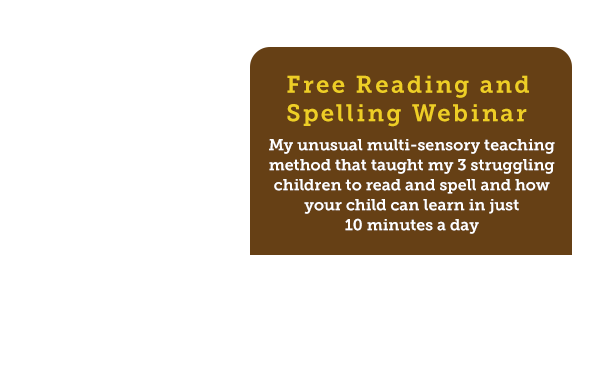
The Difference is Personal
The degree of difficulty a dyslexic person has with reading, spelling, and/or speaking varies from person to person apparently due to inherited differences in brain development, as well as the type of teaching the person receives. The brain is normal, often very “intelligent,” but with strengths in areas other than the language area.
To call this a learning disability tends to infer that the person cannot learn. But, with the proper instruction, dyslexics do learn. The key is in using the term “learning difference” rather than “disability.”
This “difference” is hidden until the person attempts to learn by reading and communicate by writing. Unfortunately, we have been very slow to understand what changes must occur in the process of instruction if the person is to learn.
The Orton-Gillingham approach grew out of the work of Dr. Samuel Torrey Orton (1879-1948) and Anna Gillingham (1878-1964). Dr. Orton, a professor of neuropsychiatry and neuro- pathology at the Neurological Institute of Columbia University, was a pioneer in focusing attention on language differences by bringing together neuropsychiatric information and principles of remediation.
As early as 1925, as a psychiatrist in the Iowa Psychopathic Hospital, Dr. Orton noted a similarity between an intelligent 16-year-old dyslexic boy’s inability to learn to read and a “stroke” patient’s difficulty when the ability to read has been lost. He identified the syndrome of developmental reading disability, separated it from mental defect and brain damage, and offered a physiological explanation with a favorable prognosis. Orton’s lifetime research into this problem eventually led to his association with Anna Gillingham, who pioneered what is called the Orton-Gillingham approach to teaching language. Working with Dr. Orton, Anna Gillingham with Bessie W. Stillman further developed procedures in an organized presentation. The original manual, published in 1935, is in its seventh edition. The care with which this approach has been taught and revised without sacrificing any of the important basic tenets, is evident in the dedication of teachers and tutors who have experienced its effectiveness.
The structure of the approach often helps to organize the student’s general ways of learning and working. Its logic helps him/her when memory fails and when he/she encounters unknown words. Its step-by-step progression leads to a sense of mastery and competence.
The dyslexic’s “learning difference” does not mean he/she cannot think, speak or be creative. Dyslexics become writers, doctors, lawyers, poets, engineers, artists, and teachers. (They probably do not become court typists!) They learn to make use of word processors in writing, and express themselves clearly and with refreshing brevity. They are not to be blamed for the wording on tax forms or government communications!
The Difference: The Educational Approach
When taught the sounds of letters, how they are made, the graphemes available and how to choose between them, the dyslexic learns to spell adequately, read well enough to comprehend at the level of his/her ability, and put thoughts on paper for others to read. By introducing the letters simultaneously through hearing, seeing and feeling, the student’s weaknesses are lessened by integrating all of his/her learning pathways. This multisensory approach helps to ensure automatic memory which is so difficult for those who lack natural facility in language learning. Progress is made by going from the simple to the more complex tasks, building in much reinforcement and proceeding as fast as possible, but as slowly as necessary to master the basic elements. Key words are used to clarify sounds. New concepts are practiced until they become automatic responses. Careful pacing, structured, but not programmed, procedures and a sequential presentation combine reading, writing and spelling to help the student succeed.
Each dyslexic is unique, but the multisensory approach, pioneered by Gillingham and refined and extended by many dedicated tutors, is flexible enough to serve a wide range of ages and learning differences. The expertise of the teacher is the key. The more severe the learning differences, the greater the need for an individualized, multisensory, sequential approach. In the hands of a skillful Orton- Gillingham trained tutor, students who have not learned in school commonly show great progress in a few months.
A multisensory approach can be valuable to many, to the dyslexic it is often essential.
The Orton-Gillingham approach stresses multisensory instruction because so many people have a problem with visual and auditory memory in language learning. It involves direct instruction in the sounds of letters, how the sounds are made in the mouth and throat, and how letters are written.
Phonics is taught in a logical, sequential, carefully organized manner which begins with simple, one-letter/one-sound symbols and progresses through digraphs, diphthongs, six kinds of syllables, roots and affixes. Each new concept builds on previously learned material. It is cumulative.
The approach is cognitive. The student is taught to think through language problems when reading and spelling rather than guess. While the English language incorporates words from many foreign languages, making it difficult to learn, it is about 85% predictable when one knows the rules and/or generalizations governing its use.
This cognitive approach takes most of the guesswork out of reading and spelling, and helps the dyslexic student to gain mastery over language learning.
 Teaching is individualized since no two persons are alike. The learning pace is as fast as one can, but as slow as one must. It is emotionally sound, recognizing that many students have been hurt by callousness and ignorance on the part of some parents as well as some educators.
Teaching is individualized since no two persons are alike. The learning pace is as fast as one can, but as slow as one must. It is emotionally sound, recognizing that many students have been hurt by callousness and ignorance on the part of some parents as well as some educators.
Does it work? Yes. Experience and research over 50 years by many dedicated tutors lead to the belief that it is never too late to learn. While early remediation is recommended to prevent failure and the ensuing painful experiences, successful results have followed tutoring at any age.
· 40 York Road · Fourth Floor · Baltimore · MD · 21204
Tel: 410-296-0232· Fax: 410-321-5069 · E-mail: info@interdys.org · Website: http://www.interdys.org




















I was diagnosed with dyslexia when I was about 5 yrs old. My mother had it really bad, she wrote left handed. And if she wrote backwards she did not misspell words but if she wrote forward she misspelled frequently. I wanted to know why I can say what I need to correctly but if I write it, then it comes out right?
I’m not completely sure I understand your question and I think others may be able to answer it if you clarify. Is the problem that you can’t say what you want to express but correctly but can write it correctly or something else? I would think it might be the other way around. The process of writing requires much more cognitive work than speaking.